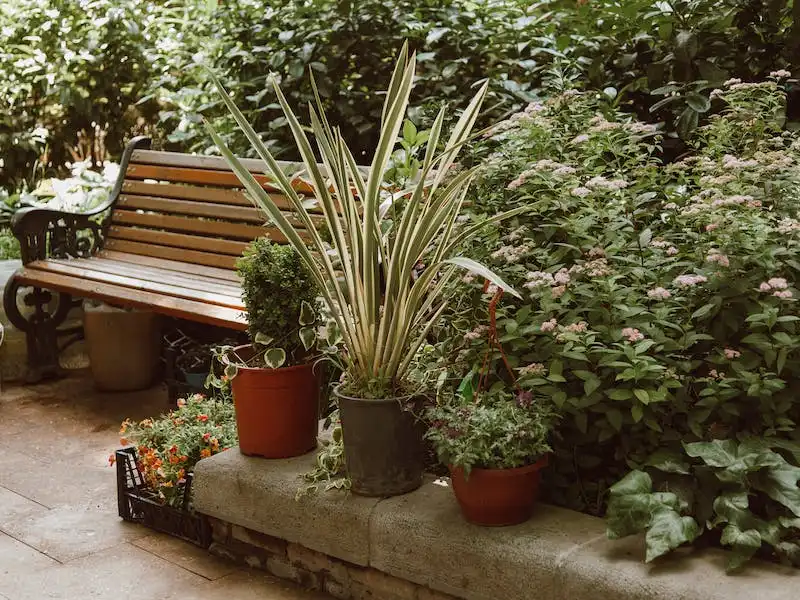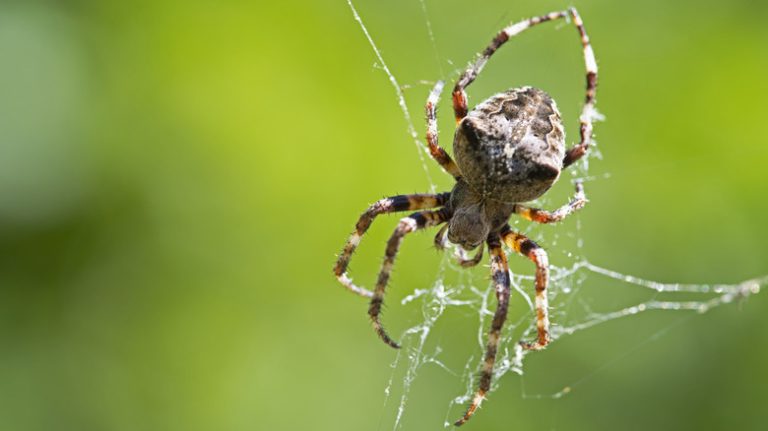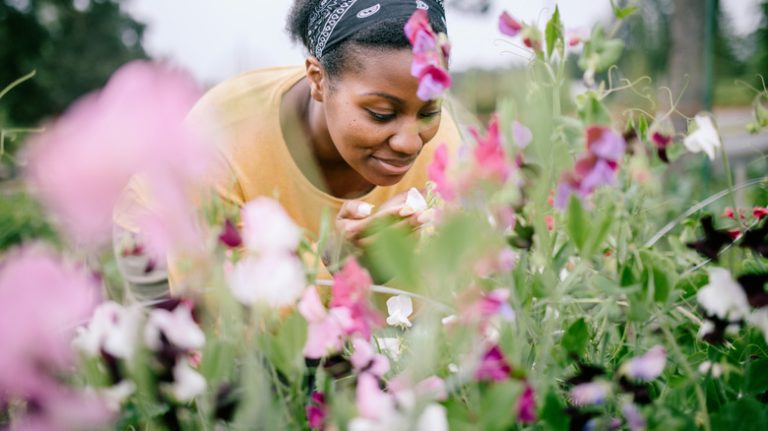Orchids are nature’s clever little treasures. Behind their stunning flowers lies a small but seemingly wasteful strategy for survival: orchids produce millions of tiny seeds. These seeds are so small that 200 of them would fit on the tip of an inch!
But why do orchids produce such a large number of seemingly wasteful seeds? Research by Wolfgang Stuppy, a morphologist at Kew’s Millennium Seed Bank, explains that this strategy is actually a clever plan to ensure their survival.
Orchid seeds are like dust. They are not covered by a protective capsule or bank like other plants. Instead, they are so small that they travel with the wind, dispersing over vast distances. This specific strategy allows the orchid seeds to find the perfect spot to germinate and grow.
It may seem incredible that such tiny seeds can survive long journeys and still find their way to suitable habitats. How do they do it? Stuppy’s research points out that orchid seeds have a unique relationship with moths and butterflies. The fine dust-like seeds attract these insects, who unwittingly help disperse the seeds as they flutter from flower to flower.
Once the seeds find their way to suitable habitats, they face another challenge – finding the right conditions to germinate and grow. Orchid seeds require a specific fungus to help them develop into mature plants. This symbiotic relationship is crucial for their survival.
So, next time you meet an orchid, take a closer look at its flowers and appreciate the beauty that lies behind the scenes – the millions of tiny seeds that hold the promise of new life and the continuation of this fascinating species.
Orchid seeds Nature’s tiny treasures
Orchid seeds are nature’s tiny treasures, with a strategy so clever that it leaves even the most astute observers in awe. These small seeds have the power to travel vast distances and encounter a myriad of challenges along the way. They are a testament to the ingenuity and survival instinct of orchids.
Wolfgang Stuppy, a morphologist at the Millennium Seed Bank, explains why orchid seeds are truly remarkable. “Orchids produce millions of dust-like seeds in capsules. When these capsules ripen, they explode, releasing the seeds into the world. The seeds are incredibly small and seemingly wasteful, but they have a specific morphology that helps them survive,” he says.
Orchid seeds, unlike those of other plants, do not have an endosperm to fuel their growth. They rely on a symbiotic relationship with fungi to obtain the nutrients they need to germinate and grow into mature plants. This strategy allows orchids to thrive in a wide range of environments, from the frost-tolerant orchids of Arctic zones to the volcanic orchids of tropical islands.
But how do orchid seeds meet their fungal friends in such vast numbers and over such great distances? The answer lies in their clever adaptation to attract specific pollinators. Orchids have evolved intricate flower morphology to entice insects, such as butterflies and moths, to their blooms. These insects unknowingly help the orchids by transferring the seeds from one plant to another, ensuring their survival.
Orchids also have a secret weapon in their survival arsenal – vanilla. The scent of vanilla is irresistible to certain species of moths, which mistake the orchid flower for a potential mate. As the moths land on the flower, they inadvertently pick up orchid seeds and carry them to new locations.
So, what do orchid seeds look like? At first glance, they may seem insignificant, resembling a fine dust or powder. However, these tiny seeds hold incredible potential. Each seed is equipped with a protective capsule, which allows it to travel long distances and survive harsh conditions.
Orchid seeds are the smallest seeds in the world, and their size alone is a testament to the wonders of nature. Encountering a single orchid seed is like discovering a precious gem amidst a vast landscape. It is a reminder of the intricate beauty and delicate balance that exists in the natural world.
With their unique strategy for survival and their seemingly magical abilities, orchid seeds truly are nature’s tiny treasures. They hold the promise of new life and the continuation of the orchid species. Each seed is a testament to the brilliance of evolution and the wonders that lie within the natural world.
Orchids have the smallest seeds in the world and they produce millions of them but why Kew’s seed morphologist Wolfgang Stuppy explains the clever survival plan that lies behind this seemingly wasteful strategy
Orchids are fascinating plants that have captured the attention of researchers and flower enthusiasts alike. Not only are they known for their beautiful and intricate flowers, but they also have a unique and efficient way of reproducing through their tiny seeds.
Research has shown that orchids produce the smallest seeds in the world, measuring only a fraction of an inch in size. Despite their tiny size, orchids are able to produce millions of seeds, which might seem wasteful at first glance. However, Kew’s seed morphologist Wolfgang Stuppy explains that there is a clever survival strategy behind this seemingly wasteful strategy.
Orchids have evolved to have such small seeds because they are highly dependent on specific conditions for their survival. These conditions include specific pollinators, such as moths and butterflies, and specific mycorrhizal fungi that help the seeds germinate and grow. By producing millions of tiny seeds, orchids increase their chances of encountering these specific conditions and maximizing their chances of survival.
Each tiny orchid seed is coated with a dust-like substance that allows it to be easily carried by the wind or other means of dispersal. This enables the seeds to travel long distances from the parent plant, increasing their chances of finding suitable conditions to grow and thrive. It’s like having a little seed bank that can spread its treasures far and wide.
Orchids are found in a variety of environments, from tropical rainforests to dry desert zones and even volcanic slopes. Each of these environments has its own unique set of conditions, and the tiny seeds of orchids allow them to adapt and survive in different habitats.
While some plants rely on large, fleshy fruits to entice animals to disperse their seeds, orchids have taken a different approach. Their tiny seeds and inconspicuous flowers require a different strategy to ensure their survival. By producing huge numbers of tiny seeds, orchids maximize their chances of future generations finding suitable conditions to grow and produce beautiful flowers.
Wolfgang Stuppy, Kew’s seed morphologist, explains that this clever survival strategy has been perfected over millions of years of evolution. Orchids have been around since the time of the dinosaurs, and their ability to produce and disperse tiny seeds has allowed them to adapt and thrive in diverse environments.
So, the next time you encounter an orchid, take a moment to appreciate the beauty and complexity that lies within its tiny seeds. They may be small, but they hold the key to the survival and success of these remarkable plants.
Seeds like dust
Orchids have a unique and fascinating way of reproducing. Unlike other plants that rely on wind or gravity for seed dispersion, orchids have evolved a special strategy to ensure their survival. Their seeds are incredibly small, almost like dust, and they are so light that they can be easily carried away by the slightest breeze.
This clever adaptation is believed to have evolved as a result of the close relationship between orchids and moths. Many orchids rely on moths for pollination, and in return, they produce seeds that are perfectly adapted for dispersal by these insects.
Research on orchid seeds has revealed that they have a specific morphology that allows them to easily adhere to the bodies of moths. When a moth visits an orchid flower, it often encounters tiny capsules filled with mature seeds. These capsules are sticky and when the moth brushes against them, the seeds cling to its body.
Once the moth moves on to the next orchid, some of the seeds may fall off, but many will remain attached. As the moth visits more orchids, the number of seeds on its body increases. Eventually, the moth flies off to another area, unknowingly carrying these tiny seeds with it.
Orchids have evolved this unique strategy because they could not rely on wind or gravity to disperse their seeds. Orchids typically grow in shady areas, such as the forest understory or volcanic zones, where wind and gravity are limited in their ability to carry seeds over long distances. By relying on moths to transport their seeds, orchids have found a way to reach new areas and colonize different habitats.
The partnership between orchids and moths is just one example of the many fascinating interactions that occur in the natural world. From the smallest flower to the vast treasures of nature’s ecosystems, there is always something new to discover and learn.
With a little help from their friends
Orchid seeds are tiny, some as small as a dust particle, and their survival in nature seems almost impossible. However, with a little help from their friends, they manage to overcome their limitations and cover vast distances to meet and flower.
In the wild, orchid seeds encounter various challenges. They are so small and light that they can easily be blown away by the wind or washed away by water, like tiny ice cream cones melting in the sun. However, nature has a clever plan to help them in their journey.
Orchids have a specific morphology that attracts certain pollinators, mainly moths and butterflies, to help them with pollination. When these pollinators visit the orchids, they inadvertently pick up the orchid’s pollen capsules, known as pollinia, and carry them to other flowers. This ensures that orchids can produce seeds even in isolated zones, where their chances of encountering other orchids are limited.
But having their pollen distributed is just the beginning of the orchid’s journey. The pollinia need to find a suitable place to land and germinate, and this is where their friends come in. Research at Kew’s Millennium Seed Bank has shown that orchid seeds need a specific fungal partner to grow into mature plants. Without this partnership, the seeds remain dormant and are wasteful, having limited chances of survival.
So, why do orchids go through all this trouble? The answer lies in their vast numbers and the need to reach out to new and distant habitats. Orchids are one of the most diverse groups of plants in the world, with over 25,000 species. To ensure the continuation of their species, they produce millions and millions of tiny seeds, each with the potential to become a new orchid plant.
While most plants rely on their own resources to grow and reproduce, orchids have evolved to rely on the help of others. This strategy has allowed them to colonize diverse habitats, from the shade of tropical rainforests to the volcanic zones of the Andes. By forming partnerships with specific fungi, orchids have found a way to overcome the limitations of their small size and limited dispersal.
In conclusion, orchid seeds may be small and seemingly helpless, but with a little help from their friends, they are able to overcome the challenges of their environment and continue to thrive in nature.




